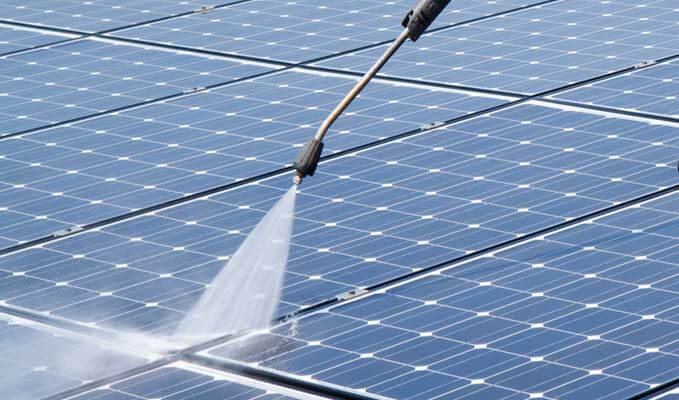One of the relatively minor side effects of the wildfires in California is the layer of dust and ash that has coated virtually every outdoor surface — including over one million homes with rooftop solar panels. So there are literally millions of people wondering: “Should I clean my solar panels?”
Fortunately, with today’s accurate solar monitoring systems, a system owner can actually determine the energy lost from dirty solar panels — and calculate the savings that can be achieved by cleaning them periodically.
Wind-blown dust and dirt is the source of most soiling on solar panels. Just like your car or your windows, the dust accumulates on the surface and builds up over time. If you’re in a dusty area like a farm or near dirt roads, this dust accumulation may be worse. Pollen from trees is another source of solar panel soiling, particularly in the spring. Some people talk about cleaning up after birds, but bird debris is usually not a problem unless your name is Hitchcock and you live in Bodega Bay.
When solar panels get dirty, photons from the sun are absorbed or reflected by the dirt instead of being converted into electrons — thereby reducing system output. The amount of output decline varies based on the location of soiling on the panels and the thickness of the soiling layer.
Heavy rains do an OK job of cleaning light dirt and debris off solar panels. But if you are in a dry and dusty are, if you can see a layer of ash on your solar panels, or if your solar monitoring system shows a significant drop off in energy product, it may be time to get your panels cleaned.
Please Listen Up to this week’s Energy Show as we walk through the performance implications of dirty solar panels, and describe the best ways to safely and effectively clean your panels (hints: never hose them off, use deionized water and an environmentally safe cleaning solution).

